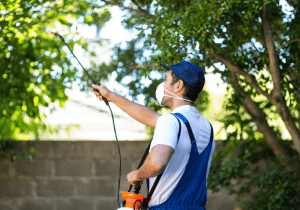Fall is a season of transformation. The leaves change colour, temperatures drop, and your trees prepare for the colder months ahead. But did you know that how you care for your trees in the fall can significantly impact their health and growth in the coming year? This blog post aims to arm homeowners and gardening enthusiasts with essential tips for preparing their trees for fall. By the end, you’ll have a comprehensive understanding of the steps needed to ensure your trees remain healthy and vibrant through the fall and beyond.
Why Fall Maintenance is Crucial for Trees
Impact of Fall Weather on Tree Health
Fall brings cooler temperatures and shorter days, which signals trees to begin preparing for winter dormancy. This period is critical because trees start conserving energy and resources. However, fall weather can also bring challenges like frost, heavy rain, and high winds, all of which can stress trees. Proper fall maintenance helps mitigate these stresses, allowing trees to transition smoothly into winter.
 The Preventive Nature of Fall Tree Care
The Preventive Nature of Fall Tree Care
Fall tree care is proactive and preventive. By addressing potential issues now, you can avoid more significant problems later. For instance, pruning dead or diseased branches can prevent the spread of disease and reduce the risk of falling limbs during winter storms. Preparing your trees in the fall sets the stage for a healthy spring bloom.
Inspection and Pruning
The Importance of Assessing Tree Health
Before you start any fall maintenance, it’s crucial to inspect your trees thoroughly. Look for signs of disease, pest infestation, or structural issues. Early detection allows for timely intervention, which can save your tree’s life and prevent damage to your property.
Guidelines for Safe and Effective Pruning
Pruning is an essential part of fall tree care. Remove dead, diseased, or damaged branches to improve the tree’s overall health and appearance. Use clean, sharp tools to make clean cuts, which helps prevent the spread of disease. Always follow the 3-cut method for larger branches to avoid damaging the bark.
Nutrient Management
Understanding the Nutritional Needs of Trees in Fall
Trees require different nutrients at various stages of their growth cycle. In the fall, they need fewer nutrients for growth and more for root development and energy storage. Understanding these needs can help you provide the right care at the right time.
Tips for Fertilization and Soil Amendment
Fall is an excellent time to fertilize your trees. Use a slow-release fertilizer rich in phosphorus and potassium to promote root growth and energy storage. Additionally, consider soil amendments like compost or mulch to improve soil structure and nutrient availability. These practices will help your trees absorb nutrients more efficiently.
Protection Against Fall Pests and Diseases
Common Pests and Diseases to Watch for in Fall
Fall can bring a host of pests and diseases that can harm your trees. Common issues include aphids, scale insects, and fungal infections like powdery mildew. Being vigilant and recognizing these problems early can save your trees from severe damage.
 Strategies for Prevention and Control
Strategies for Prevention and Control
To protect your trees, consider integrated pest management (IPM) strategies. Use natural predators like ladybugs for aphid control and apply appropriate fungicides for fungal infections. Regular monitoring and early intervention are key to keeping your trees healthy through the fall.
Watering Techniques for Fall
The Role of Proper Watering in Fall Tree Care
Watering is often overlooked in fall tree care, but it’s crucial for maintaining tree health. Adequate watering helps trees build up the moisture reserves they’ll need to survive the winter. Proper watering can also help reduce stress and prevent disease.
Guidelines for Watering Frequency and Methods
In the fall, water your trees deeply and less frequently. This encourages deep-root growth, which is essential for stability and nutrient uptake. Use a soaker hose or drip irrigation system to deliver water directly to the root zone. Avoid overhead watering, as it can contribute to fungal diseases.
Fall tree care is essential for maintaining healthy, vibrant trees. From inspection and pruning to nutrient management and pest control, each step plays a vital role in preparing your trees for the colder months ahead. By applying the tips shared in this post, you’ll not only protect your trees but also enhance their growth and health in the coming year. And if you ever feel uncertain or overwhelmed, don’t hesitate to seek professional tree care services. Your trees will thank you for it!

